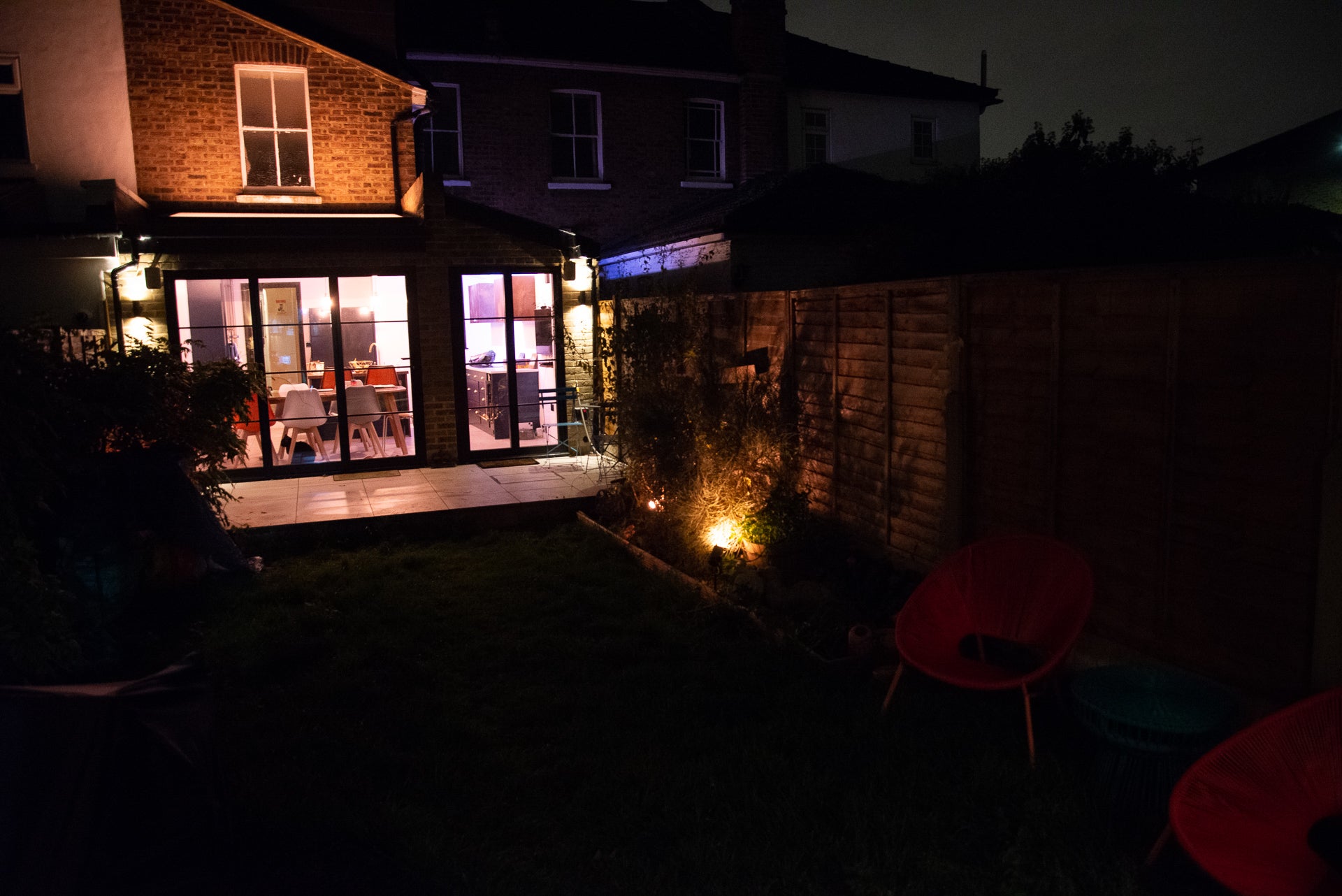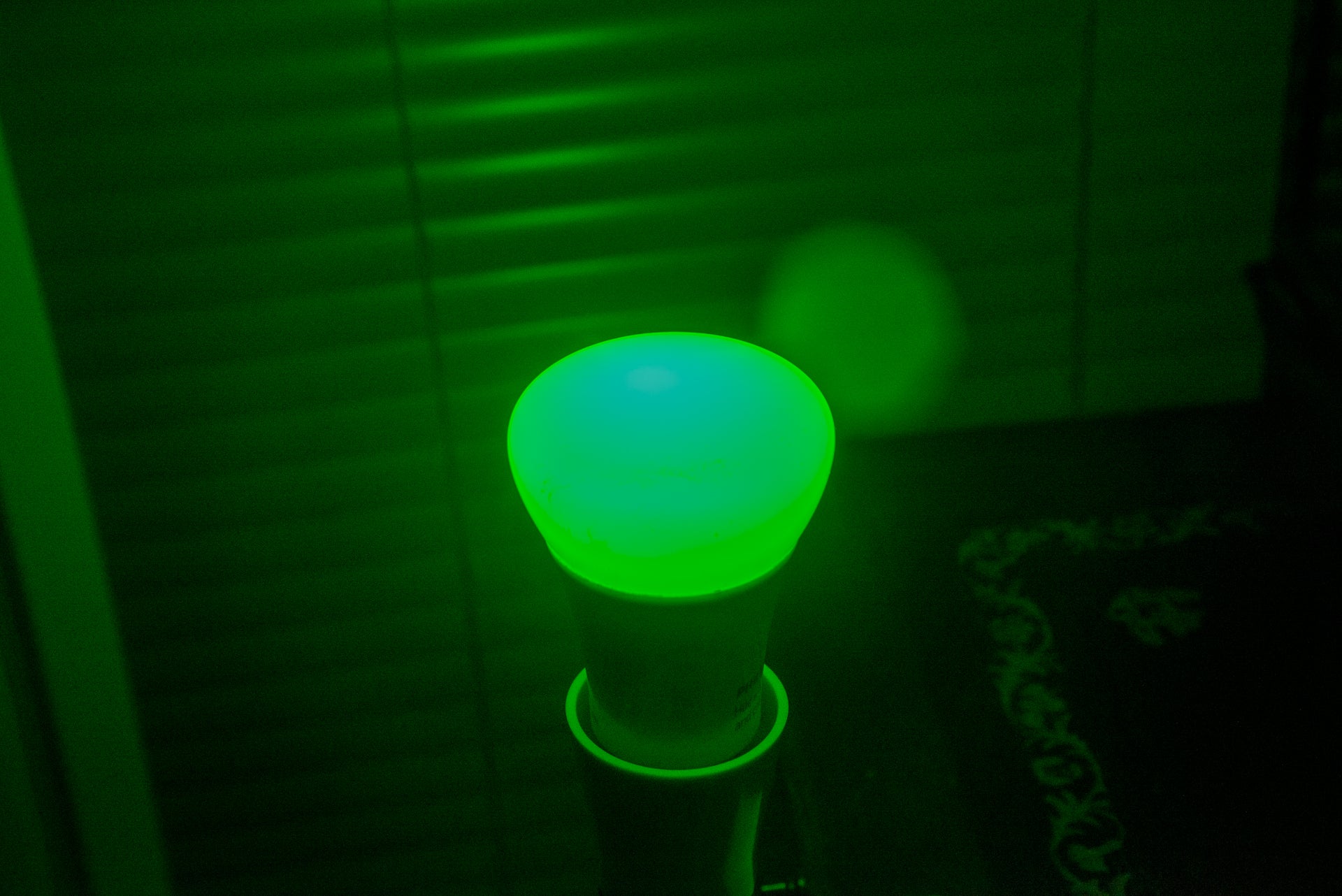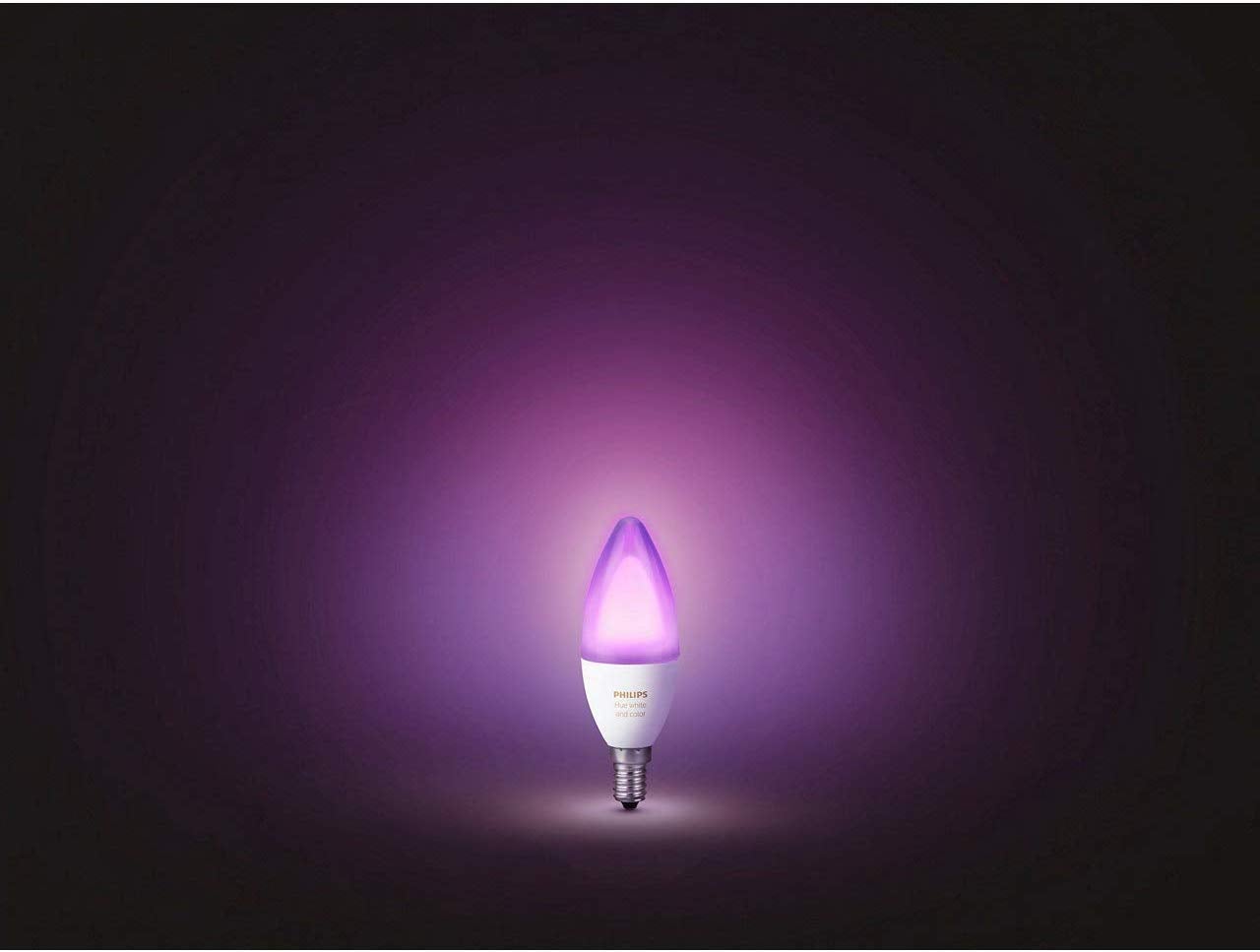Senic Friends of Hue Outdoor Switch Review
A clever outdoor switch for your Philips Hue lights
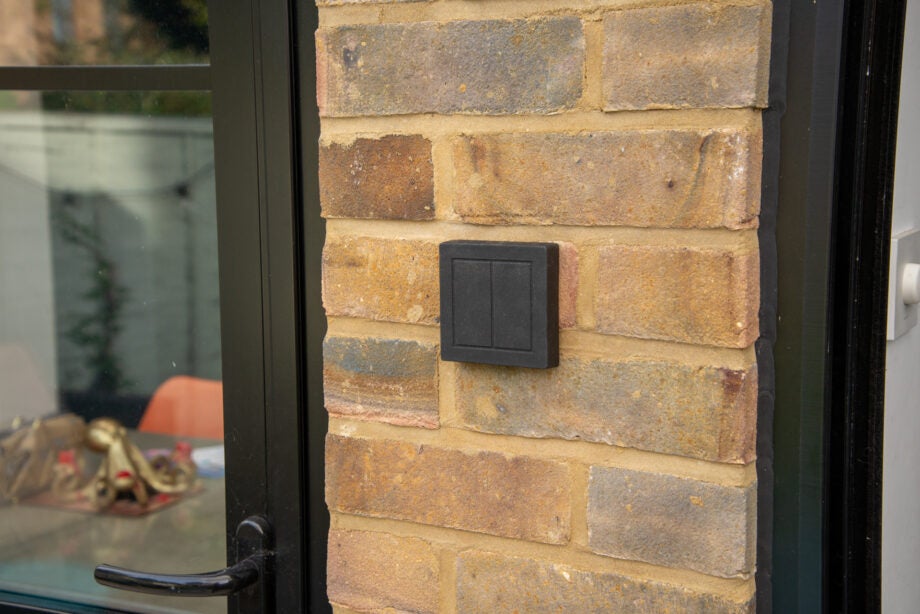

Verdict
Battery-free and responsive, the Senic Friends of Hue Outdoor Switch is a great way to add manual control to your Hue lights from outside. This switch looks great and is pretty flexible in terms of how you can programme it – but a few more options for when you press and hold a button would be nice.
Pros
- Looks great
- Easy to install
- No batteries
Cons
- Lacks flexibility for Hold options
Availability
- UKRRP: £69.99
- USARRP: $79
- EuropeRRP: €79
Key Features
- Switch typeCompatible with Philips Hue systems, this switch requires a bridge. Once connected, it will work with HomeKit, too
- ConnectionThis switch uses the Zigbee smart home protocol
Introduction
There’s a growing number of Philips Hue Outdoor products available, but the only official way to control them from the outside is through the Outdoor Motion Sensor or the app. For many of us, then, we’ll end up with a wireless remote placed close to a door. The Senic Friends of Hue Outdoor Switch offers a battery-powered alternative.
Designed for outdoor use, this wireless switch can be placed anywhere outside, giving you control of your outdoor lights from outside. It works by harvesting power from the physical click action and offers flexible customisation options.
Design and installation
- Neat and plain-looking
- Can be drilled or stuck in place
- No batteries required
The Senic Friends of Hue Outdoor Switch is a ruggedised version of the Senic Friends of Hue Smart Switch. This model features a tough rubberised coating, and it’s IP44 rated, which means it can withstand dust and rain. There are two switches on this model, which you can programme to do different things (more on that later).
Available in black only, this small square switch will integrate well into all outdoor setups. You can screw it into place, or use the provided sticky fixers to attach it less permanently.
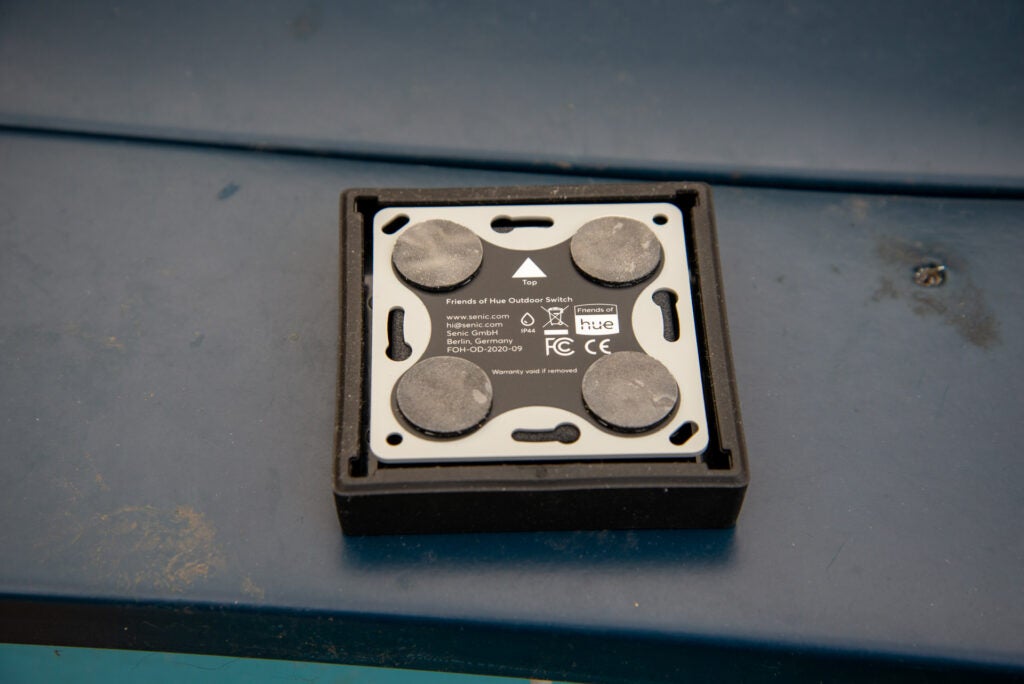
Opting for the latter, I had my switch in place in a few seconds. The only real requirement is that the switch has to be within around 30m of another Hue device, allowing it to connect to the mesh network.
It’s then easy to pair the switch with a Hue Bridge via the app, by pressing and holding the buttons when you’re prompted. Note that this switch doesn’t require batteries; instead, it harvests power from the click, so it will never need charging.
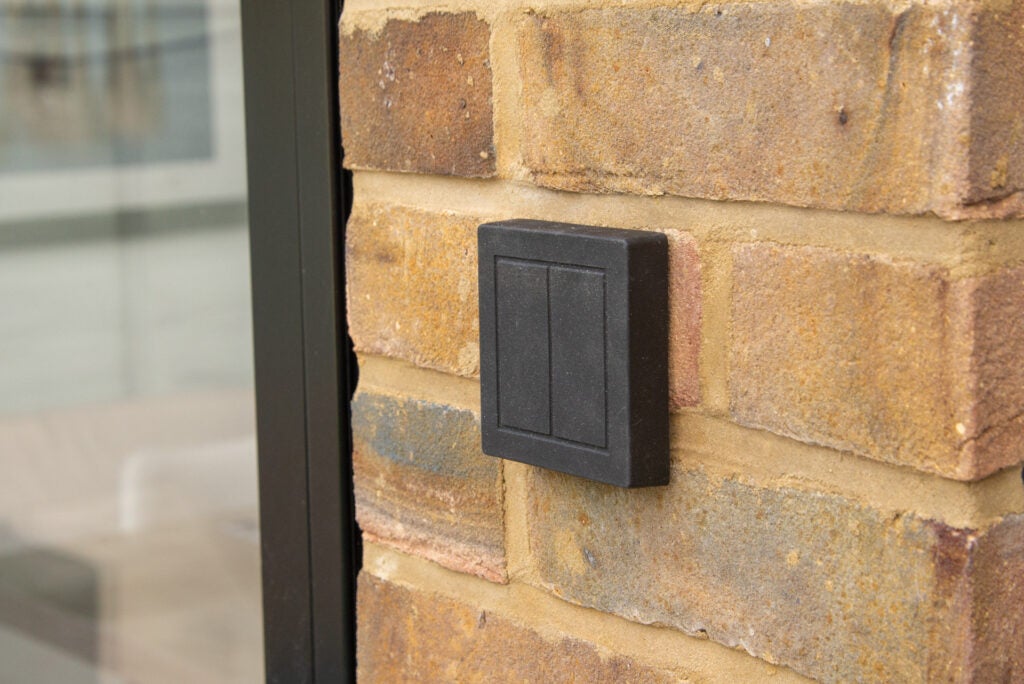
Features
- Works with multiple rooms
- Works in HomeKit
- Some more scene control would be nice
Once in the Hue app, the switch is fully configurable. It’s effectively a four-button controller (up and down on one switch, and the same again on the second switch), letting you programme what each of the buttons does.
Each button has two options: press and hold. The press option lets you select a scene, turn the lights on to their last state, or turn the lights off; the hold option lets you turn off lights, do nothing, or increase or decrease brightness.
Normal operation, as it were, would be to have the single press options turn on, or select a scene for the top button of a switch and off for the bottom button; for press, you’d go for increase brightness (top) and decrease brightness (bottom).
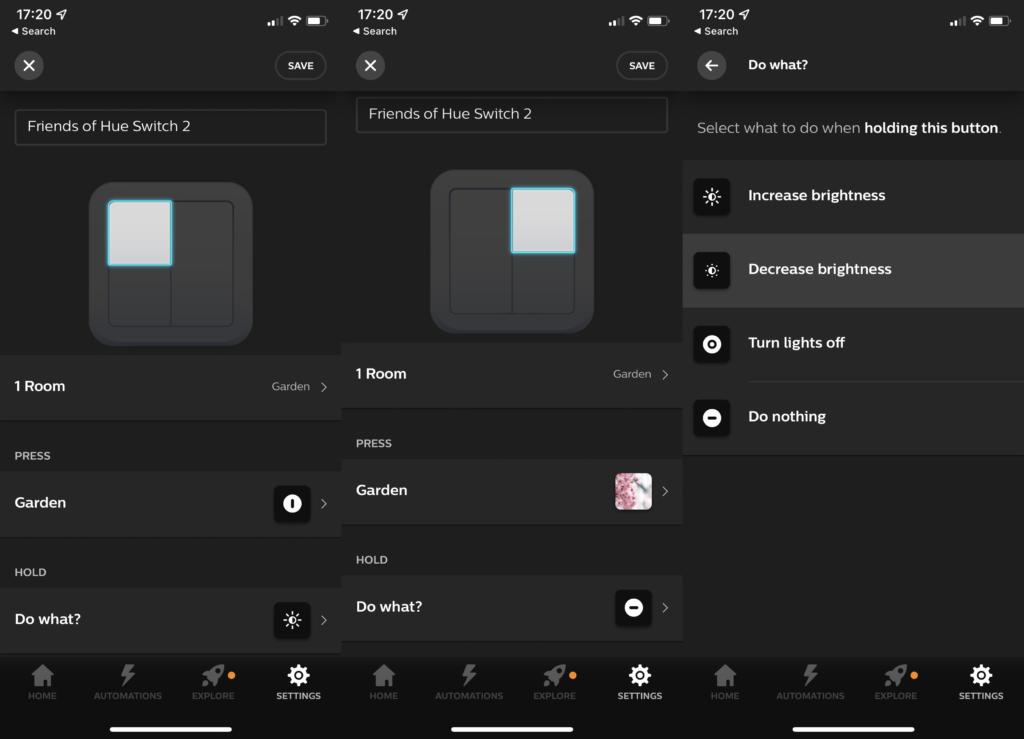
That just leaves you to work out what to do with both switches. The main choices are to have the separate switches to control different rooms (garden and shed, for example), or to have one switch control the standard functions (on/off and dimmer), and the second switch to provide a choice of more scenes.
In this latter configuration, it would be nice if the hold options also let you select a scene, as this would widen your options.
The Senic Friends of Hue Outdoor Switch also appears in HomeKit as a switch with four buttons (each with two actions), so you can control any device that works with the Home app as well.
Performance
- Reacts quickly to presses
- May need reconnecting, if you change channel
Thanks to the Zigbee protocol that runs Hue, the Senic Friends of Hue Outdoor Switch is quick to react. Tap a button and the chosen scene or action happens almost immediately: certainly, the system is so quick that this wireless switch is as responsive as a physical wired switch.
Using the hold option for dimming, I was impressed with the responsiveness of the system. Dimming or brightening happens while you’re holding the button, with the change both fast enough that you don’t get fed up, and slow enough that you can let go of the button when you’re at the desired brightness.
As with the standard indoor model, you may need to reconnect the Senic Friends of Hue Outdoor Switch if you change the channel on which the Zigbee network runs. You only need to change the channel if you’re having trouble with lights not connecting. When you do, the Hue app will indicate which buttons you need to press to reconnect the switch.
Latest deals
Should you buy it?
Do you want to control your Hue lights from outside? Well, this is definitely the product for you.
If you can place a regular Hue wireless dimmer by a door, then you can remove the remote section and take it outside when you need it, which may be a more flexible option.
Final thoughts
If you want manual control of your Hue lights from outside, then there’s no real alternative to the Senic Friends of Hue Outdoor Switch. Luckily, while this switch is quite expensive, it’s also very good, and it doesn’t require batteries.
How we test
Unlike other sites, we test every smart home product we review thoroughly over an extended period of time. We use industry standard tests to compare features properly. We’ll always tell you what we find. We never, ever, accept money to review a product.
Find out more about how we test in our ethics policy.
We test how each product integrates with other smart home systems including Amazon Alexa, Google Assistant, Apple HomeKit, IFTTT and Samsung SmartThings
We use each smart home product in a real world setting, integrating it into our home.
FAQs
No, it harvests energy from the action of clicking the button.
You can connect the switch to a Philips Hue Bridge only, although that makes the device appear in HomeKit, too.

